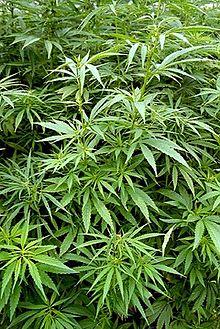In a world increasingly attuned to the nuances of wellness and self-exploration, the act of smoking cannabis has emerged as a topic of both intrigue and controversy. For centuries, this herb has traversed cultures and borders, shifting from a sacred plant in ancient rituals to a focal point of modern recreational and medicinal use. As society grapples with the implications of legalization and perceptions of cannabis, an exploration of its many dimensions—effects on the mind and body, methods of consumption, and societal attitudes—reveals a rich tapestry that challenges our understanding of both the plant and its consumers. Whether viewed as a source of relaxation, a catalyst for creativity, or a remedy for ailments, smoking cannabis invites a deeper conversation about our relationship with this powerful plant. In this article, we delve into the myriad aspects of smoking cannabis, unraveling the layers of its significance in our contemporary landscape.
Table of Contents
- Exploring the Effects of Cannabis on Mental Health
- Guidelines for Responsible Use and Dosage
- Navigating the Different Methods of Consumption
- Understanding the Legal Landscape of Cannabis Use
- Q&A
- In Retrospect
Exploring the Effects of Cannabis on Mental Health
The relationship between cannabis and mental health is multifaceted, with varying effects depending on individual circumstances and usage patterns. Research indicates that while some users report enhanced relaxation, increased creativity, or a temporary escape from anxiety, others may experience adverse reactions. These can include short-term memory disruption, elevated anxiety, or even paranoia. Factors such as the strain of cannabis, dosage, and the user’s pre-existing mental health conditions can significantly influence the outcomes. Here are some key points to consider:
- Short-term effects: Mood elevation, altered sensory perception, and reduced inhibitions.
- Long-term effects: Potential anxiety exacerbation and dependency issues.
- Strain variability: Indica strains may promote relaxation, while sativa strains can be more stimulating.
Understanding these dynamics is crucial for users contemplating the potential mental health implications of smoking cannabis. A subtle but profound aspect lies in the method of consumption. Smoking might lead to a different psychoactive experience compared to edibles due to the variance in THC absorption rates and onset times. This variability can affect not only the immediate experience but also the long-term emotional well-being of the user. Below is a simplified comparison of various cannabis consumption methods and their possible mental health impacts:
| Consumption Method | Onset Time | Duration of Effects | Mental Health Consideration |
|---|---|---|---|
| Smoking | Immediate | 1-3 hours | Quick relief but potential for anxiety spikes. |
| Edibles | 30-90 minutes | 4-8 hours | Gradual onset may help with long-term anxiety but overdosing is easy. |
| Vaping | Immediate | 2-4 hours | Similar to smoking, with fewer harmful byproducts. |
Guidelines for Responsible Use and Dosage
When engaging in the practice of smoking cannabis, it’s essential to prioritize safety and wellbeing. Here are some key considerations to ensure a responsible experience:
- Know Your Limits: Understand your tolerance and start with a small amount to gauge your body’s reaction.
- Choose the Right Strain: Different strains can produce varying effects; pick one that aligns with your desired outcomes.
- Stay Hydrated: Keep water nearby to avoid dehydration, which can sometimes accompany cannabis use.
- Find a Safe Environment: Ensure you are in a comfortable and familiar space, free from distractions.
- Avoid Mixing Substances: Refrain from combining cannabis with alcohol or other drugs to prevent unpredictable effects.
Dosage significantly impacts your experience; thus, being mindful is crucial. Here’s a simple table to help guide dosage based on experience level:
| Experience Level | Recommended Dosage (MG) |
|---|---|
| Beginner | 1-5 |
| Intermediate | 5-10 |
| Advanced | 10-20 |
Always keep in mind that everyone’s reaction to cannabis can differ. Adjust your consumption based on personal comfort and always consume mindfully.
Navigating the Different Methods of Consumption
When it comes to enjoying cannabis, one of the most popular methods is smoking. This method offers a variety of options that cater to different preferences, from traditional joints to modern devices. Here are some of the common ways people smoke cannabis:
- Joints: Rolled using rolling paper, these are one of the most classic forms, providing a straightforward and portable way to consume.
- Blunts: Similar to joints but wrapped in tobacco leaf, giving a unique flavor and experience.
- Pipes: These can vary in size and design, providing a quick and sometimes more concentrated way to inhale cannabis.
- Bongs: Water pipes that cool the smoke, which can enhance smoothness and flavor.
- Vaporizers: Devices that heat cannabis to extract cannabinoids without burning, making for a less harsh experience.
Each method carries its own unique benefits and drawbacks, influencing the experience significantly. For those new to smoking, it can be helpful to consider factors like:
| Method | Benefits | Drawbacks |
|---|---|---|
| Joints | Easy to roll, portable | Can be harsh on the throat |
| Blunts | Long-lasting burn, unique flavor | Higher nicotine content from tobacco |
| Pipes | Simple use, less waste | Cleaning required for optimal use |
| Bongs | Smoother hit, cooling effect | Less portable, more cleaning |
| Vaporizers | Healthier option, less odor | Higher initial cost |
Understanding these nuances can enhance your smoking experience and help you find the method that best suits your style and needs.
Understanding the Legal Landscape of Cannabis Use
The legal status of cannabis use varies significantly across jurisdictions, creating a complex landscape that users must navigate. In many places, cannabis has been decriminalized or legalized for either medical or recreational purposes, yet the specifics can differ widely. Understanding the legal distinctions is crucial for users to avoid penalties and to enjoy their experiences safely. Important factors that influence the legality include:
- Type of Use: Whether for medicinal or recreational purposes.
- Location: Different states or countries have their own laws.
- Age Restrictions: Minimum legal age can vary.
- Possession Limits: Amount one can legally possess varies.
In addition to state laws, federal regulations can also play a significant role in shaping the cannabis landscape. In countries like the United States, cannabis remains classified as a Schedule I drug under federal law, complicating its legal use even in states where it has been legalized. This contradiction can lead to confusion regarding banking, trade, and employment. Users must consider the following aspects of federal law:
| Factor | Status |
|---|---|
| Medical Use | Legal in many states, but not federally |
| Recreational Use | Legal in select states, not federally |
| Banking and Finance | Limited access due to federal prohibition |
| Employment | Varies; drug testing policies impact legality |
Q&A
Q&A: Exploring the World of Smoking Cannabis
Q1: What is cannabis, and what are its primary components?
A1: Cannabis is a flowering plant that has been used for centuries for both medicinal and recreational purposes. The primary components of cannabis are cannabinoids, with the two most well-known being tetrahydrocannabinol (THC) and cannabidiol (CBD). THC is responsible for the psychoactive effects commonly associated with cannabis, while CBD is celebrated for its therapeutic properties without the high.
Q2: How do people typically smoke cannabis?
A2: There are several methods to smoke cannabis, each offering a unique experience. The most common ways include using joints (cigarette-like rolls), blunts (similar to joints but made with tobacco leaves), pipes, and bongs (water pipes which filter the smoke). Each method varies in terms of efficiency, taste, and the intensity of the high.
Q3: What are the legal considerations regarding smoking cannabis?
A3: The legality of smoking cannabis varies widely across the globe and even within countries. In some places, it’s fully legal for both recreational and medicinal use, while in others, it remains strictly prohibited. It’s essential to know local laws, as well as any age restrictions and regulations regarding possession and public consumption.
Q4: Are there any health risks associated with smoking cannabis?
A4: Like any form of smoking, inhaling cannabis can pose risks to respiratory health. Users may experience symptoms such as coughing, bronchitis, or increased phlegm production. Additionally, regular users might develop a dependency. It’s also important to consider mental health impacts, as cannabis can affect individuals differently, occasionally triggering anxiety or psychosis in susceptible users.
Q5: What effects can one expect from smoking cannabis?
A5: The effects of smoking cannabis can vary based on the strain, method of consumption, and individual factors such as tolerance and body composition. Common effects include euphoria, relaxation, altered perception of time, and increased appetite. However, effects can also include anxiety or paranoia, particularly with high-THC strains.
Q6: How does the method of consumption affect the experience?
A6: The method of smoking can significantly influence the experience. For instance, bongs may produce a cooler smoke, resulting in a smoother inhale, while joints might provide a more straightforward and traditional experience. Furthermore, the speed at which cannabinoids enter the bloodstream varies, affecting the onset and intensity of effects – bongs tend to deliver a quicker high compared to other methods.
Q7: What are some cultural or social aspects of smoking cannabis?
A7: Smoking cannabis is often intertwined with social and cultural practices. Sharing a joint or attending a marijuana-themed gathering can foster social connections and community bonding. Different cultures may have unique rituals or music associated with cannabis use, contributing to its rich tapestry in human experience.
Q8: Are there alternatives to smoking cannabis for those who wish to avoid inhalation?
A8: Yes, there are several alternatives to smoking. Many people choose edibles—food products infused with cannabis—tinctures (cannabis extracts), and vaporizers that heat cannabis without combustion. These methods can provide a different experience and may be more suitable for those concerned about respiratory health.
Q9: How can newcomers approach smoking cannabis safely?
A9: For newcomers, it’s vital to start slow and with a lower potency product to gauge individual tolerance. Being in a comfortable environment, having trusted friends around, and staying hydrated can enhance the experience. Furthermore, understanding local laws and responsible consumption practices is essential for safe engagement.
Q10: Where can one find accurate information about cannabis?
A10: Accurate information about cannabis can be found through reputable health organizations, government resources, and educational websites dedicated to cannabis research. Engaging with knowledgeable professionals, such as healthcare providers or licensed dispensary staff, can also provide personalized guidance and reliable insights.
In Retrospect
As we exhale the last wisps of our exploration into the world of smoking cannabis, it’s essential to embrace the multifaceted nature of this plant. From its rich history and cultural significance to the ongoing debates surrounding its legality and health implications, cannabis continues to provoke thought and foster conversation. Whether viewed through the lens of recreation, medicine, or social justice, the act of smoking cannabis invites us to consider deeper questions about personal choice, responsibility, and community.
As we close this chapter, remember that knowledge is a crucial companion on the journey of understanding cannabis. Whether you’re a seasoned connoisseur or a curious beginner, informed choices can pave the way for more meaningful experiences. So, as you navigate the highs and lows of this vibrant world, keep an open mind and a discerning spirit. After all, every puff tells a story, and every story adds another layer to the evolving narrative of cannabis in our society.


